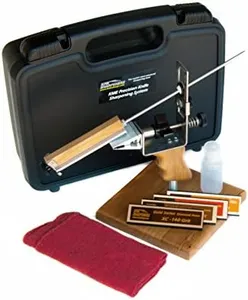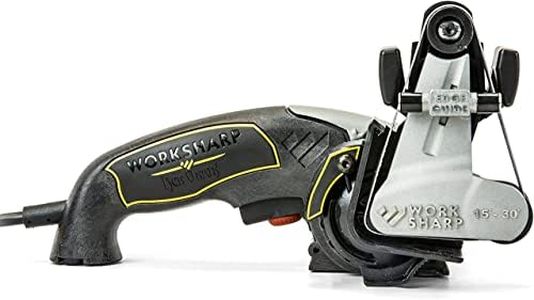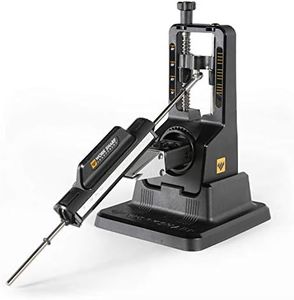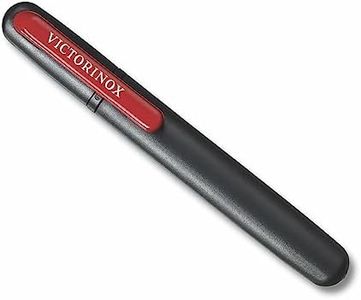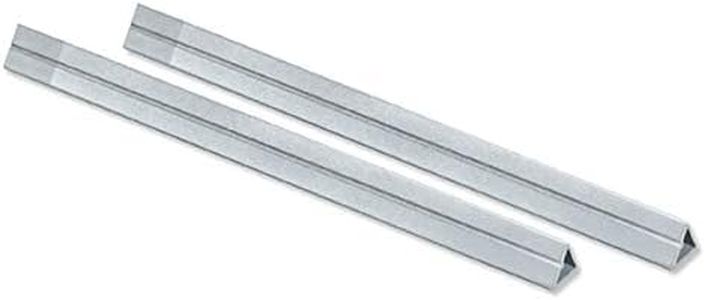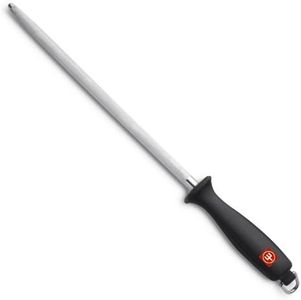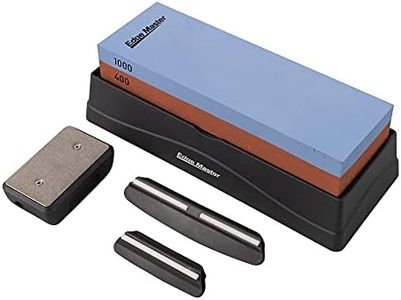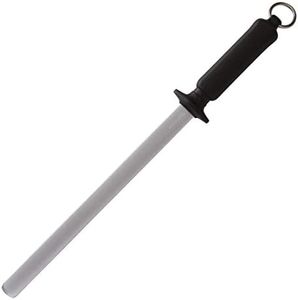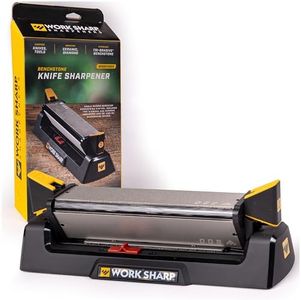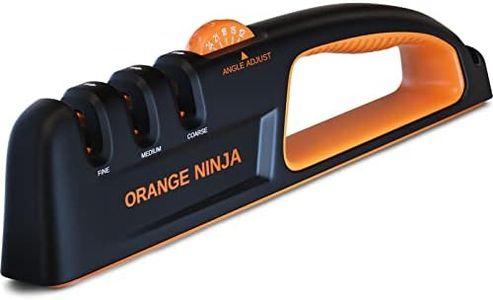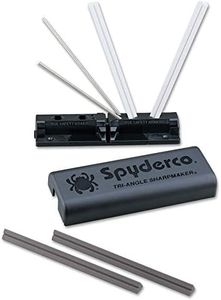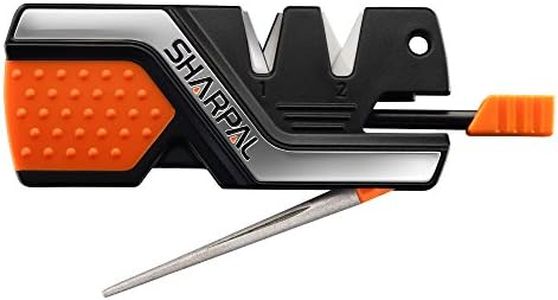We Use CookiesWe use cookies to enhance the security, performance,
functionality and for analytical and promotional activities. By continuing to browse this site you
are agreeing to our privacy policy
10 Best Pocket Knife Sharpeners
From leading brands and best sellers available on the web.Buying Guide for the Best Pocket Knife Sharpeners
Choosing the right pocket knife sharpener can make a real difference in maintaining your knives and keeping them ready for use, whether you're outdoors, traveling, or at home. A good sharpener should be easy to use, portable, and compatible with your specific knife types. Understanding the features that matter most will help you select a sharpener that meets your needs, is convenient to carry, and keeps your blades in top condition.Sharpening MaterialThe sharpening material is what actually makes your knife blade sharp again, and it can come in various forms like ceramic, diamond, carbide, and synthetic stones. Ceramic is gentle and good for honing and light touch-ups, while diamond and carbide materials are much harder and work faster on really dull blades. If you have a softer, more delicate knife, ceramic might be best; for harder steels or heavy-duty knives, diamond and carbide offer more aggressive sharpening. Choose your material based on the type and hardness of knives you use most often.
Size and PortabilitySize and portability refer to how compact and easy-to-carry the sharpener is. Small, lightweight sharpeners slip easily into your pocket, backpack, or gear bag, making them perfect for camping, fishing, or hiking—ideal for those who value portability over everything else. Slightly larger models may offer more sharpening options or stability but might be less convenient for on-the-go use. Evaluate how and where you'll use your sharpener and pick a size that matches your level of mobility.
Sharpening Stages/SlotsMany pocket knife sharpeners offer one or more stages or slots for sharpening, each designed for a different part of the sharpening process, such as coarse grinding, fine honing, or polishing. A single-stage sharpener is straightforward and quick, while two-stage or multi-stage models let you reprofile a very dull blade and then finish with a refined edge. If you need to maintain sharpness easily, a one-stage unit is fine, but for repairing really dull blades or achieving a super sharp edge, choose a sharpener with multiple stages or slots.
Angle GuidesAngle guides help ensure that you are sharpening your knife at a consistent, ideal angle, which makes sharpening easier and produces better results. Some sharpeners have fixed angle slots, while others allow you to adjust the angle to match different knife types. If you're new to sharpening or want the easiest, most reliable results, pick a sharpener with built-in angle guides. Experienced users who know the right angle for their knives may prefer a manual sharpener without guides for more flexibility.
Ease of UseEase of use captures how simple and intuitive the sharpener is for everyday maintenance. Some sharpeners are straightforward pull-through devices, requiring only a few swipes, while others use rods or require more skill and practice. If you want quick, fuss-free sharpening, go for a simple design with clear instructions. Those who enjoy the process or have prior experience might choose a tool that allows for more manual control.
DurabilityDurability is about how sturdy and long-lasting the sharpener is. High-quality materials and construction will stand up to frequent use and being carried outdoors. Lightweight plastic sharpeners are easy to carry but might wear out faster, while metal or tougher synthetic models are built to last. Consider how often you'll use your sharpener and whether it will face tough conditions when picking for durability.

